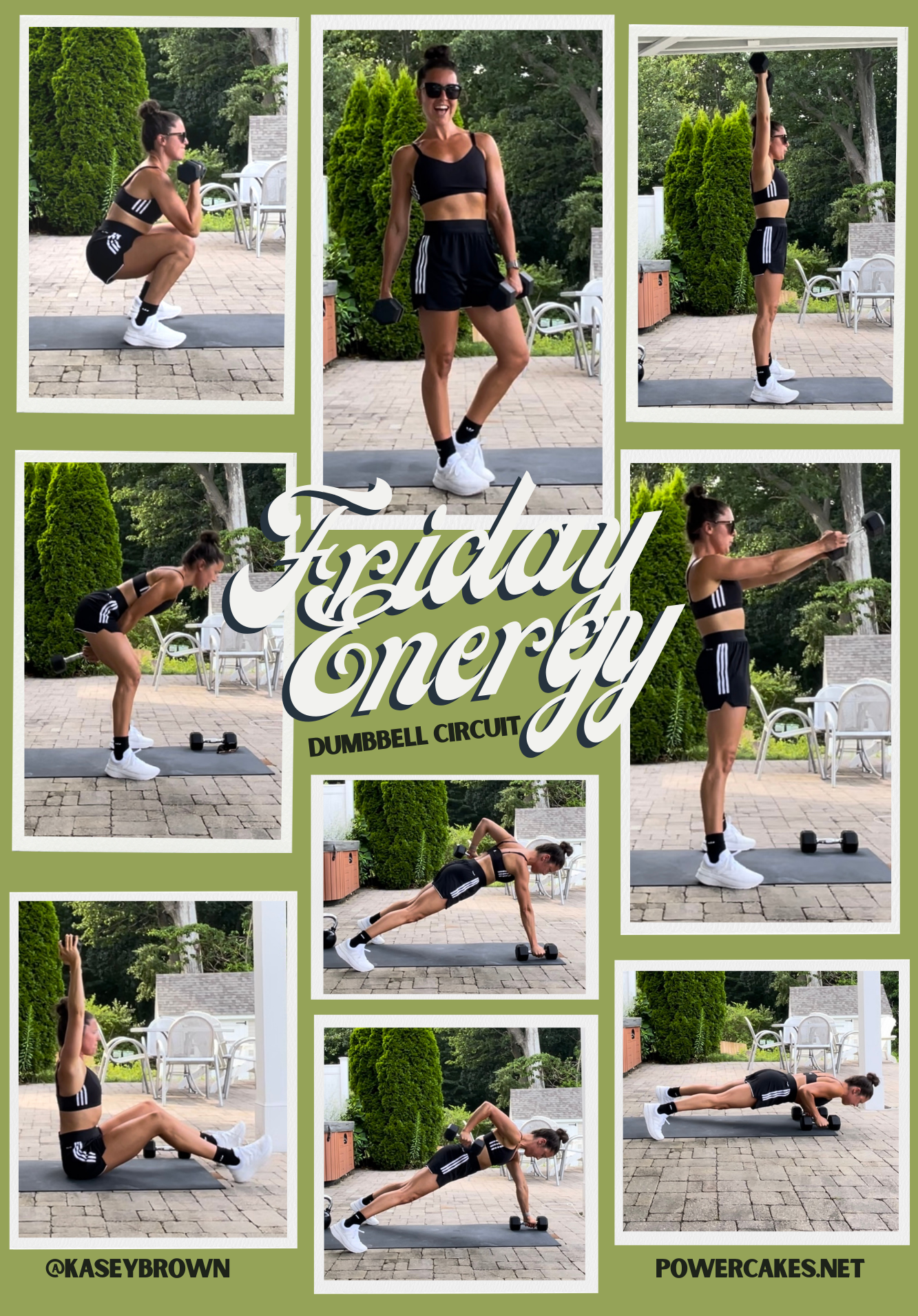Cortisol, often referred to as the “stress hormone,” is one of the most powerful hormones in the body. While cortisol’s primary function is to help manage stress, it also plays a crucial role in a wide range of bodily processes, from metabolism to immune function, and even brain activity. When cortisol levels are out of balance, they can cause a variety of health problems, including chronic stress, fatigue, weight gain, and poor sleep.
It’s gotten a lot of attention lately and has been trending on social media, with many people claiming that just “fixing” their cortisol drastically improved their health and helped them lose weight. This points to just how important cortisol is, but before we jump into believing that a stack of herbs is a miracle cure, it’s important to understand some background context.
The Low Down on Balancing Cortisol
Specifically, “cortisol cocktails” including ingredients like orange juice, coconut water, and salt are trending as miracle cures. Personally, I’ve found some other (no-cost) factors to be more effective. Even though I did create my own version of the cortisol cocktail drink!
In this article, I’ll break down my understanding of cortisol and what’s worked for me. As always, this is my opinion, shared only for inspiration and general information and is never for comparison or advice!
So, how can we manage and optimize our cortisol levels to feel our best? The answer lies in understanding how cortisol works and supporting its natural rhythm with simple lifestyle habits. These habits include things like light exposure, supplements, and sleep practices.
In this post, we’ll take a deep dive into the science of cortisol, explain how light impacts cortisol levels, explore the top supplements for supporting healthy cortisol patterns, and show you how sleep can be a game-changer for hormone balance. Plus, I’ll share what I do to keep my cortisol levels in check.
What Does Cortisol Do?
Cortisol is a steroid hormone produced by the adrenal glands, which are found on top of your kidneys. It’s primarily known for its role in the “fight or flight” response, helping the body respond to stress by increasing blood sugar, enhancing brain function, and suppressing non-essential functions like digestion and reproduction. While cortisol is essential for survival in stressful situations, chronic cortisol imbalance (too high or too low) can lead to serious health problems.
Our cortisol levels follow a natural circadian rhythm, peaking in the morning shortly after waking and gradually declining throughout the day. This daily pattern is essential for maintaining energy levels, sleep quality, and emotional balance. When cortisol levels are chronically elevated or suppressed, this rhythm is disrupted, leading to feelings of fatigue, difficulty focusing, and mood swings.
In the past, there was a point when my cortisol patterns were exactly opposite of the ideal natural pattern. My deep dive into helping my body find balance taught me a lot about cortisol, light, sleep, and other factors that can help.
The Impact of Light on Cortisol
One of the most powerful and often overlooked influences on cortisol patterns is light exposure. In fact, I’d dare say this was the most important factor for me in finding balance, and the good news is that it’s free. Light has a direct effect on cortisol production, helping regulate the body’s internal clock or circadian rhythm. Exposure to natural light, especially in the morning, plays a crucial role in maintaining healthy cortisol patterns.
1. Morning Light to Balance Cortisol
Getting natural sunlight in the morning is critical for resetting your circadian rhythm and ensuring cortisol levels peak at the right time. When you wake up and are exposed to sunlight, it triggers the release of cortisol to help you feel alert and energized. This cortisol surge is designed to support your wakefulness and focus throughout the day.
Research shows that morning light exposure, preferably within the first 30 minutes of waking, has a significant impact on the timing and intensity of your cortisol release. Studies suggest that people who receive adequate morning light exposure tend to have better sleep quality, improved mood, and a more stable cortisol rhythm.
A study published in The Journal of Clinical Endocrinology & Metabolism found that morning light exposure increases cortisol production. This in turn improves alertness and reduces sleep inertia (the grogginess many people experience after waking). The timing of light exposure matters though. Blue light exposure at night can interfere with your ability to fall asleep and disrupt cortisol patterns.
2. Natural Light Throughout the Day
Not just the morning light, but consistent exposure to natural light throughout the day helps to maintain healthy cortisol rhythms. When you’re indoors all day, especially under artificial lighting, your body doesn’t receive the necessary signals to effectively regulate its circadian rhythm. This can result in disrupted cortisol patterns, leading to fatigue and increased stress.
Spending time outdoors during daylight hours helps synchronize your body’s internal clock. This can improve sleep, reduce stress, and enhance overall well-being. If you’re working from home or spend most of your day indoors, try to step outside every few hours for a short walk or simply sit by a window with natural light.
I love Dr. Courtney Hunt’s recommendation of: sunrise, sunlight, sunset, repeat.
3. The Effect of Artificial Light
Artificial lighting (especially blue light from screens) can throw off your cortisol patterns. Exposure to blue light late at night suppresses melatonin (the sleep hormone). It also delays the natural decline of cortisol in the evening, making it harder for you to unwind and get restful sleep. To minimize the negative effects of artificial light, consider using blue light filters on your devices in the evening. You can also limit screen time at least an hour before bed.
In my house, we try to avoid screens after the sun goes down and I have red and amber bulbs in lamps that we use after dark. I don’t go as far as just using candles, though some people have tried this as well. If I’m going to be in a car, airport or store after dark, I’ll often wear blue light blocking glasses.
Top Supplements to Support Healthy Cortisol Levels
While light exposure and sleep play foundational roles in managing cortisol, certain supplements also help. They support healthy cortisol levels and alleviate the negative effects of chronic stress. Here are some of the most effective, evidence-backed supplements to consider.
1. Ashwagandha
Ashwagandha, an adaptogenic herb, helps the body adapt to stress and regulate cortisol levels. Several studies show ashwagandha supplementation can reduce cortisol levels and improve the body’s stress response. Cherry rose moon milk is a great way to get some ashwagandha before bed!
In one study published in The Indian Journal of Psychological Medicine, participants who took ashwagandha showed a significant reduction in cortisol levels and reported less stress and anxiety. Ashwagandha has also been shown to support improved sleep and better physical performance.
2. Rhodiola Rosea
Rhodiola rosea is another adaptogen that can help the body manage stress and balance cortisol rhythms. Studies suggest rhodiola can reduce fatigue, improve mood, and decrease cortisol levels during times of stress.
A review published in Phytomedicine found that rhodiola supplementation helped reduce cortisol secretion and improved mental performance in individuals exposed to stress. This herb is particularly helpful for people who experience energy crashes during the day, as it helps maintain balanced cortisol levels throughout the day.
3. Phosphatidylserine
Phosphatidylserine is a phospholipid found in the brain that plays a critical role in cognitive function and cell signaling. Research has shown that phosphatidylserine supplementation can help reduce cortisol levels in response to exercise and stress.
A study published in The Journal of the International Society of Sports Nutrition showed that participants who took phosphatidylserine experienced lower cortisol levels after intense physical activity. This supplement is beneficial for managing cortisol spikes after exercise or stressful events.
Taking choline supplements in the morning was also helpful for my energy and focus. I rotate between this choline supplement, this one, and this one. I did this while also taking these cortisol supplements.
4. Magnesium
Magnesium is a vital mineral that plays a crucial role in over 600 biochemical reactions in the body. It’s also known for its ability to help regulate the stress response. Studies have shown that magnesium supplementation can help reduce cortisol levels, especially in people experiencing chronic stress.
A study in The Journal of Research in Medical Sciences found that magnesium supplementation helped lower cortisol levels in individuals under stress, improving both mood and relaxation. Magnesium-rich foods like leafy greens, nuts, and seeds can also support healthy cortisol rhythms. I also like to supplement with Magnesium Breakthrough which has 7 different types of magnesium
5. Omega-3s
Omega-3 fatty acids are essential fats that play a crucial role in supporting overall health, and they’ve been shown to help regulate cortisol levels. Research indicates that omega-3s, found in fatty fish like sardines, can reduce inflammation and lower cortisol levels in response to stress. They also help improve brain function and mood, further supporting your body’s ability to manage stress effectively.
There are Omega-3 supplements and I occasionally take these but some people worry about oxidation in these supplements. Whenever possible I try to get Omega’s from food sources like seafood.
Adding sardines to your diet a few times a week is an excellent way to boost your omega-3 intake. Sardines are not only rich in omega-3s, but they’re also an affordable and sustainable option for enhancing your overall nutrition, helping to maintain balanced cortisol levels and improve your stress resilience.
6. Magnolia Bark
Magnolia bark is an ancient herb that has gained attention for its potential to support cortisol balance and promote relaxation. The active compounds in magnolia bark, particularly honokiol and magnolol, have been shown to help reduce cortisol levels by interacting with the body’s stress response systems. Studies suggest magnolia bark can help manage anxiety and promote a sense of calm, which is essential for keeping cortisol levels in check during stressful situations.
Additionally, magnolia bark may help improve sleep quality by supporting the natural decline of cortisol in the evening. Incorporating magnolia bark as a supplement or in a calming tea can be a beneficial addition to your routine for managing stress and promoting balanced cortisol levels.
A supplement blend like this one has magnolia bark along with other supporting herbs for balanced cortisol.
How to Use Sleep to Improve Cortisol Levels
Sleep is one of the most effective ways to balance cortisol levels and support overall hormone health. The relationship between sleep and cortisol is complex, but it’s essential for keeping your body’s stress response in check.
1. Prioritize Sleep Quality
Chronic sleep deprivation can elevate cortisol levels and disrupt your body’s natural rhythm. To optimize cortisol levels, focus on improving your sleep quality. Aim for 7-9 hours of sleep per night, and ensure that your sleep environment is conducive to rest. This means a dark, quiet, and cool room.
Avoid caffeine and heavy meals close to bedtime, and incorporate relaxing activities like reading or meditation to wind down. Here’s how to create an ideal sleep environment.
2. Maintain a Consistent Sleep Schedule
Going to bed and waking up at the same time every day helps regulate your cortisol patterns. Irregular sleep schedules can confuse your body’s internal clock, leading to fluctuations in cortisol levels. Try to get up at the same time each morning, regardless of whether it’s a workday or weekend, and avoid sleeping in excessively.
3. Use Sleep to Lower Cortisol at Night
The body naturally releases cortisol in the morning to help you wake up, but cortisol should be at its lowest point at night to prepare your body for restful sleep. A consistent sleep routine, combined with reducing stress during the day, will help promote this natural decline.
Avoid stimulating activities in the evening, like intense exercise or stressful work tasks. These can raise cortisol levels and disrupt sleep. Here’s a peek into my nighttime routine.
What I Do to Support Healthy Cortisol Patterns
For me, balancing cortisol is about creating a routine that respects my body’s natural rhythms. In my opinion, supplements alone won’t work without these other lifestyle factors as well. Here’s what I do:
- Morning sunlight: I aim to get outside within 30 minutes of waking up to soak up some natural sunlight. This helps reset my circadian rhythm and supports a natural cortisol surge to get my day started. I also try to eat breakfast and all meals outside when I can.
- Light exposure throughout the day: I make a point of staying active during the day, taking short breaks to step outside or sit near a window with natural light. This keeps my cortisol levels balanced throughout the day. I feel best when I get enough bright light
- Supplements: I take ashwagandha and magnesium in the evenings to support relaxation and help lower cortisol levels before bed.
- Sleep routine: I stick to a consistent bedtime, avoiding screens for at least an hour before bed, and make sure my bedroom is cool, dark, and quiet.
Action Steps
- Get outside for 20-30 minutes in the morning to get natural light.
- Consider adding supplements like ashwagandha or magnesium.
- Establish a consistent sleep schedule and create a relaxing bedtime routine.
By supporting your body’s natural rhythms with light, supplements, and sleep, you can help maintain balanced cortisol levels. This can lead to improved energy, mood, and overall health.
What do you do to support your cortisol levels? Leave a comment and let us know!






















